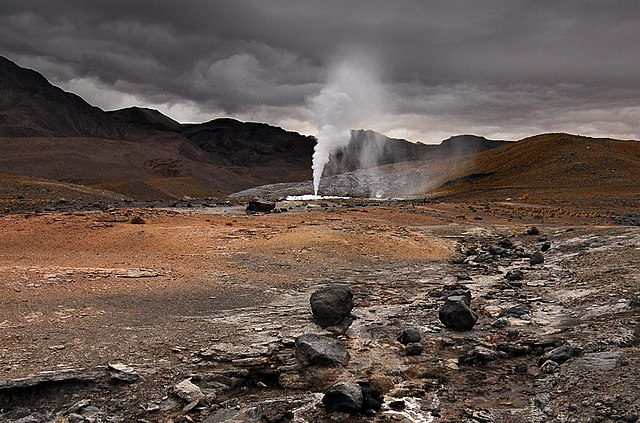Chile’s Lithium Crossroads: Politics, Profit, and the Price of Power in the Atacama

In the high desert salt flats of northern Chile, where flamingos nest and brine glitters under blinding sun, a new alliance between state and private industry may decide whether the country powers the green future—or becomes a cautionary tale in resource politics.
From Fertilizer Giant to Lithium Titan
Long before lithium-fueled electric cars, it was fertilizer that made SQM a household name in the Chilean industry. Born in 1968 as a state-owned chemical company aimed at reviving the nitrate wealth of an earlier era, it was transformed under Augusto Pinochet’s dictatorship when privatizations handed control to politically connected elites. The most notable? Julio Ponce Lerou, the general’s son-in-law, maneuvered SQM into becoming one of the world’s largest producers of lithium, the metal now central to batteries, EVs, and grid storage.
That rise came at a price. SQM has been linked to insider trading, bribery scandals, and allegations of illicit political donations. As noted by Americas Quarterly, controversy clings to the company like desert dust. Ponce still controls over a quarter of SQM’s shares through Grupo Pampa, even though he’s barred from management.
But the stakes changed when lithium demand exploded in the 2010s. Prices surged to more than $80,000 a ton, and Chile’s Salar de Atacama—a shimmering basin 4,000 meters above sea level—became the world’s most strategic salt flat. Yet as Australia and Argentina moved aggressively to court investors, Chile hesitated, and by the early 2020s had slipped to second place in global production.
President Gabriel Boric, elected in 2021, promising a blend of social justice and climate leadership, saw a way forward. In late 2023, his government brokered a bold deal: Codelco, the state copper giant, would partner with SQM to co-manage lithium production in the Atacama. By mid-2024, the agreement was signed. Starting in 2031, Codelco will control 50% plus one share of all SQM operations in the region, with plans to double production while redirecting more of the profits into Chilean hands.
Public Mandates, Private Ambitions
Supporters say the Codelco-SQM pact revives a successful Chilean model: the state owns the resource, private firms do the heavy lifting, and the nation benefits from the revenues and strategic oversight. “Chile wants to lead the global energy transition, not chase it,” said Codelco chairman Máximo Pacheco in comments to Americas Quarterly, defending the deal’s closed-door nature.
But not everyone is convinced. Critics argue that skipping a public bidding process forfeited billions in potential revenue and left too much power in the hands of a company with a troubled past. Even political rivals who rarely agree—Evelyn Matthei on the right, José Antonio Kast on the far-right, and Jeannette Jara on the left—have criticized the arrangement. Matthei, the frontrunner for Chile’s 2025 presidential election, has pledged to revisit the terms if elected.
There’s also skepticism about Codelco’s capacity. Once a symbol of national pride, the copper giant is now grappling with aging mines, cost overruns, and falling output. Can it manage the added complexity of lithium, a market that moves with far greater volatility? Pacheco insists it can. “We know this land. We know these communities,” he said, emphasizing Codelco’s experience negotiating in the Atacama and its commitment to new extraction technologies that promise to cut brine and water use by 65% by 2040.
Even SQM’s leadership sees the partnership as necessary. “There’s no way the industry can survive current prices unless producers innovate,” said lithium chief Carlos Díaz, pointing to efforts like direct lithium extraction and seawater infrastructure that would reduce the strain on freshwater aquifers.
A Boom Gone Bust—For Now
If 2022 was a lithium gold rush, 2024 has been a gut check. Spot prices collapsed to under $10,000 per ton, wiping out margins and exposing how fragile the sector can be. SQM, which posted over $2 billion in profit just two years ago, swung to a loss. Though it returned to black in early 2024, executives warned of even lower prices ahead.
In response, SQM slashed its investment plans by 31%. It’s trying to maintain high production levels to preserve market share, even if that worsens the oversupply. Meanwhile, bureaucratic hurdles persist: lithium is still classified as a strategic mineral under Chilean law, meaning every permit must clear the national atomic agency—a rule born of Cold War fears.
That red tape, plus environmental concerns, explains why SQM is now co-investing in Australia, where hard-rock lithium faces fewer restrictions. It’s also why ecological advocates, like scientist Cristina Dorador, warn that no amount of technological gloss can hide the fact that evaporating brine harms biodiversity. Flamingos, microbial ecosystems, and Indigenous livelihoods all depend on the fragile balance of the salt flats.
Some Indigenous communities cautiously support the Codelco partnership. Others accuse the government of cutting deals without proper consultation. Chilean law requires Indigenous consent for new projects, but critics say the consultation process often comes after key decisions are already made. A congressional report released earlier this year called for the pact to be scrapped altogether.
The World Watches—and Waits
Chile’s lithium isn’t just a domestic issue. It’s a geopolitical pivot point.
The United States has made Chile a cornerstone of its battery supply strategy, while China’s Tianqi, which owns 22% of SQM, has raised red flags about the Codelco deal. Regulatory agencies in Europe, Brazil, and Japan have already approved the partnership, but China’s review lingers. If it blocks the agreement, Santiago faces a no-win choice: alienate its biggest trading partner or risk losing favor with Washington, just as the Inflation Reduction Act pours billions into “friendly minerals.”
Chile also lacks an investment screening mechanism like those in the U.S. or Australia. That means future lithium concessions could go to any bidder—Chinese, American, or otherwise—depending on who moves fastest and writes the biggest check.
For now, Boric’s administration is betting that the Codelco-SQM alliance will weather market turbulence and political turnover. SQM has promised to reach carbon neutrality by 2040 and is piloting Salar Futuro, a water-saving program. Codelco hopes to reroute seawater from its copper pipelines to support lithium operations and reduce aquifer drawdowns.
But nothing is guaranteed. New technologies like sodium-ion batteries, solid-state cells, and advanced recycling could reduce global lithium demand faster than expected. And Chile’s political calendar looms: the next president could reshape royalties, streamline permits, or tear up agreements altogether.
The Atacama isn’t just a mine. It’s a mirror, reflecting Chile’s effort to balance national identity, environmental responsibility, and economic ambition. As San Pedro de Atacama community leader Valdés put it to Americas Quarterly, “Lithium might light the world, but here it is also water, heritage, and identity.”
Also Read: Uruguay Builds a Housing Revolution One Brick—and One Neighbor—at a Time
Whether this gamble becomes Chile’s next copper moment—or a missed opportunity—depends on what happens in the boardrooms, courtrooms, and ballot boxes in the months to come. For now, the salt flats are watching.





